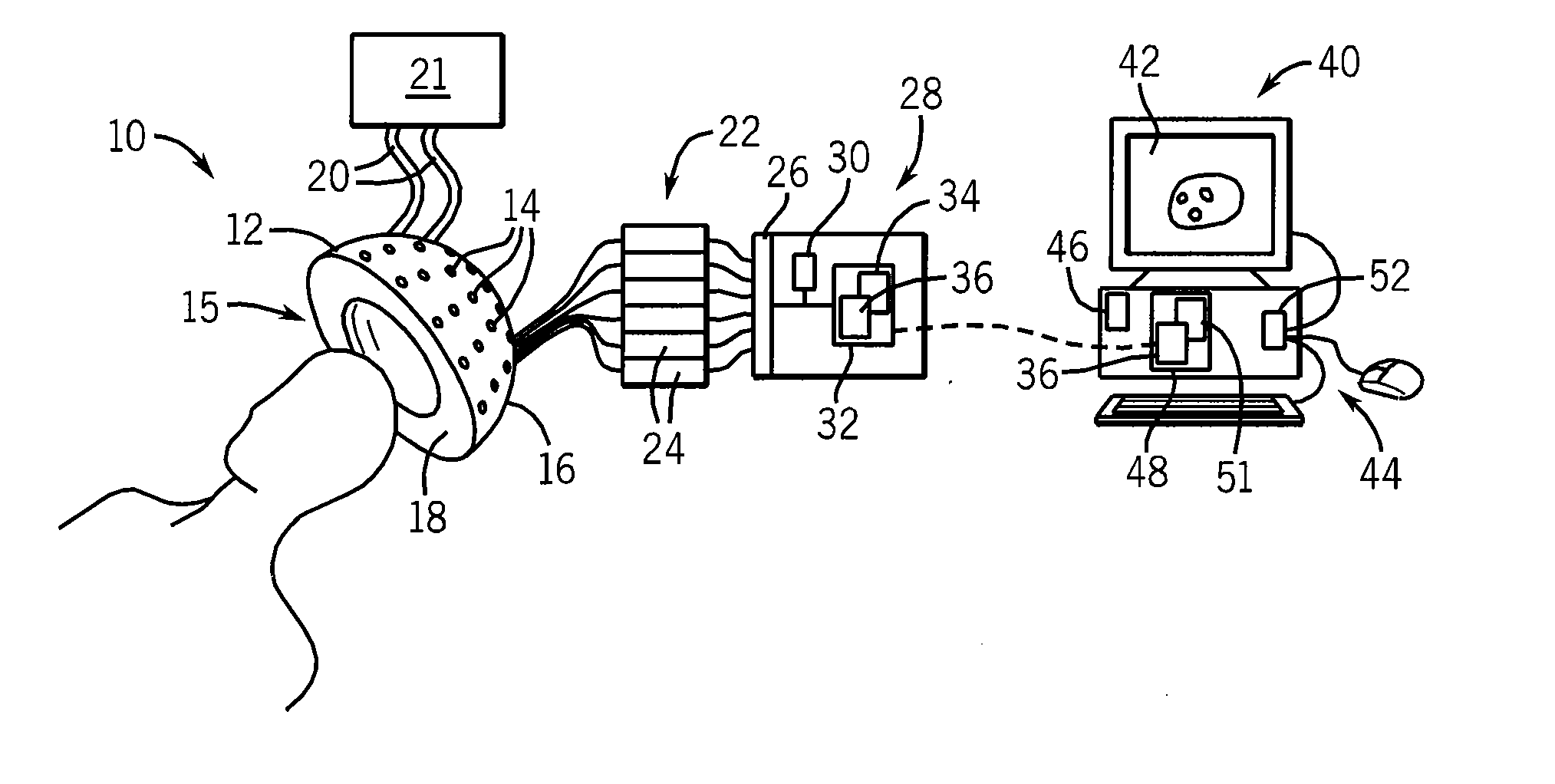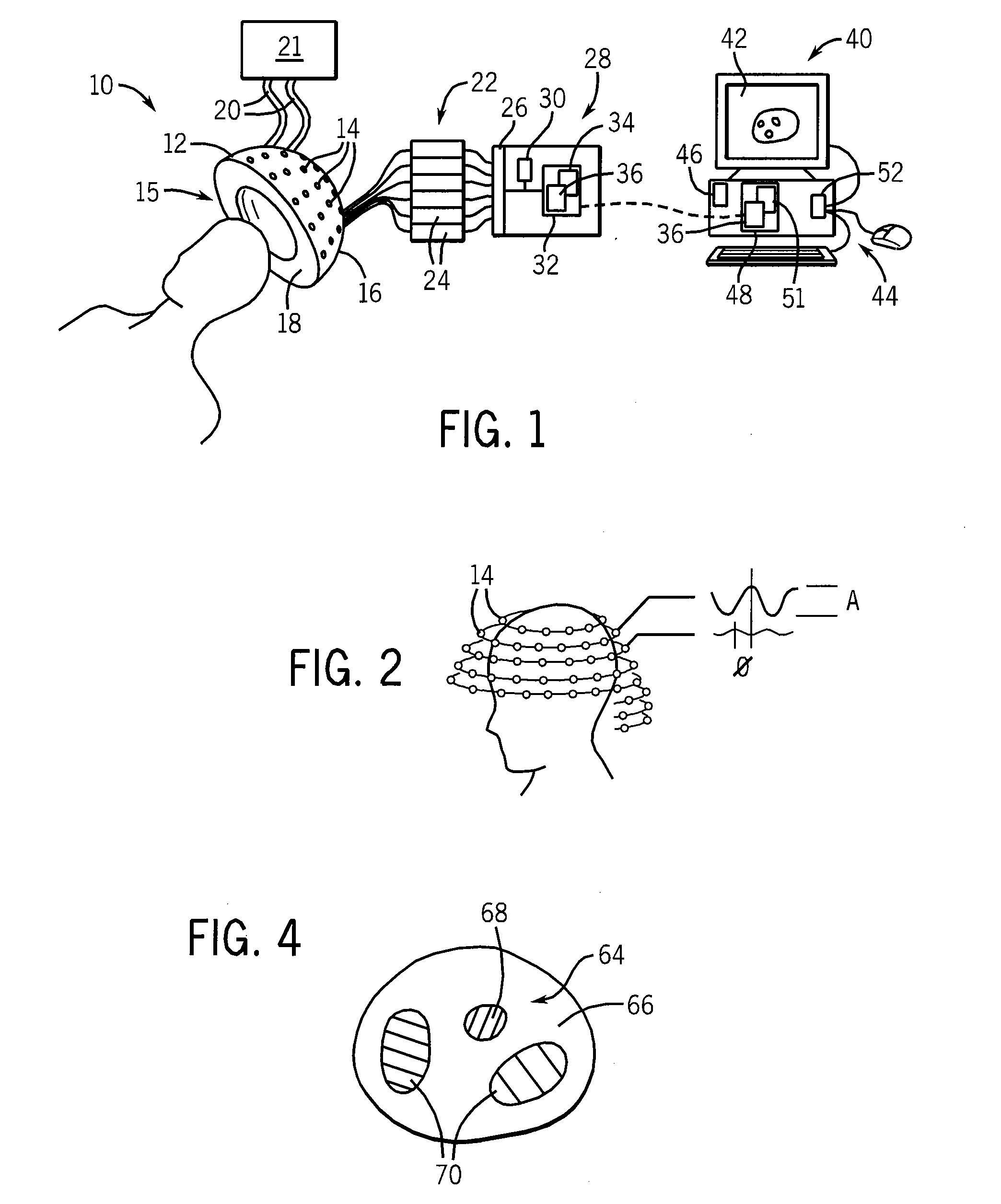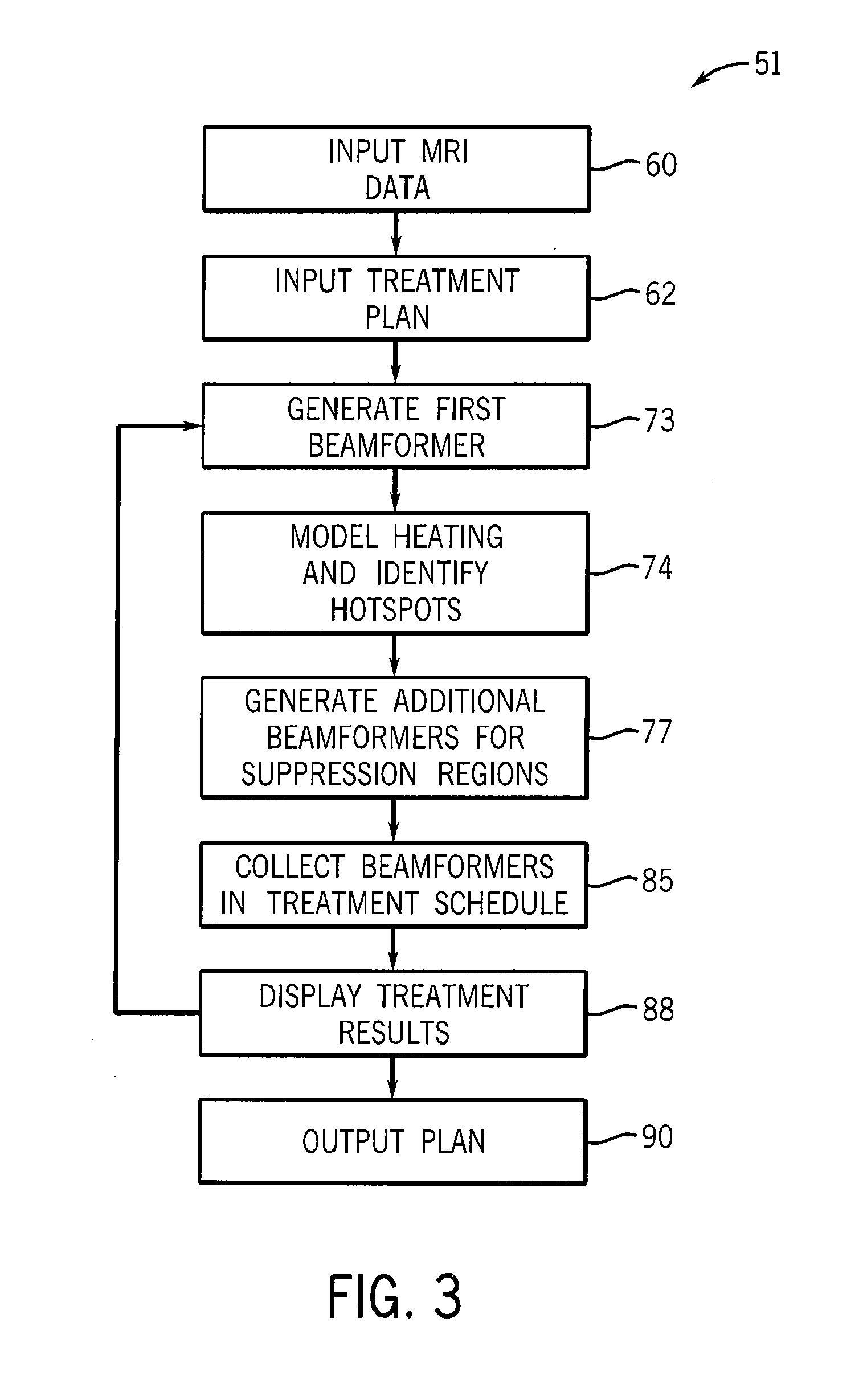Microwave Hyperthermia Treatment System
- Summary
- Abstract
- Description
- Claims
- Application Information
AI Technical Summary
Benefits of technology
Problems solved by technology
Method used
Image
Examples
Embodiment Construction
[0047]Referring now to FIG. 1, a hyperthermia system 10 may provide an antenna fixture 12 supporting a plurality of antennas 14 about a treatment volume 15. In one embodiment, the treatment volume may be defined by a substantially hemispherical shell 16 whose inner surface may contain a collar 18 receiving and supporting the top of the patient's head. The collar may be filled with de-ionized water that may be circulated through connecting hoses 20 with a cooler / pump 21 providing skin cooling of at approximately 15 degrees centigrade of the patient's head to minimize surface heating of the skin by microwave energy from the antennas 14 as will be described.
[0048]Referring also to FIG. 2, the antennas 14 may be arranged at multiple heights along an inferior superior axis of the patient and about an upper portion of the patient's head. The antennas 14 preferably direct microwave energy inward toward the treatment volume 15 and may, for example, be microwave horns or patch antennas or ot...
PUM
 Login to View More
Login to View More Abstract
Description
Claims
Application Information
 Login to View More
Login to View More - R&D
- Intellectual Property
- Life Sciences
- Materials
- Tech Scout
- Unparalleled Data Quality
- Higher Quality Content
- 60% Fewer Hallucinations
Browse by: Latest US Patents, China's latest patents, Technical Efficacy Thesaurus, Application Domain, Technology Topic, Popular Technical Reports.
© 2025 PatSnap. All rights reserved.Legal|Privacy policy|Modern Slavery Act Transparency Statement|Sitemap|About US| Contact US: help@patsnap.com



